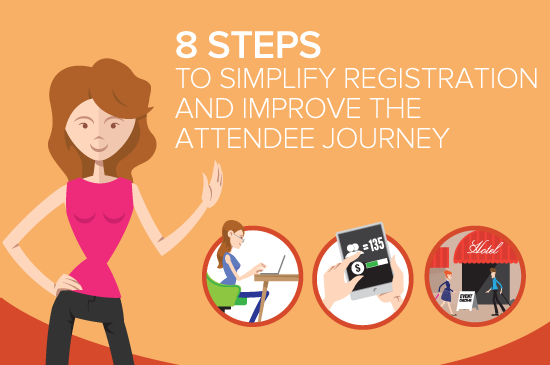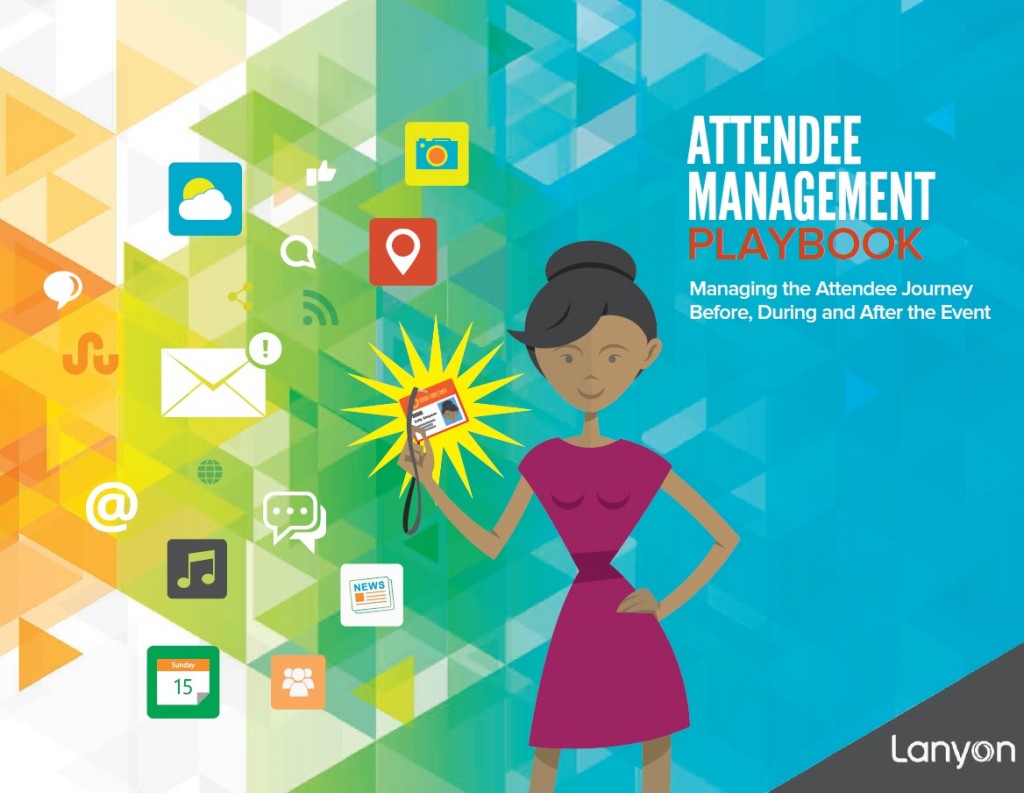This is a sponsored post written by Robin Gallegos, Event Marketing Manager at Lanyon. More information about Event Manager Blog’s sponsored posts.

Planners know that a great event has to deliver something to every stakeholder. Attendees need information, networking opportunities and engagement. Exhibitors, sponsors and speakers should feel satisfied that their product, brand or message has reached the largest audience possible. In addition, leadership teams need to see the event as integral to their overall business strategy.
At the same time, attendees are the heart of any event. Without them, there would be no event. So how does a planner develop an event strategy that begins and ends with the attendee experience — yet satisfies everyone else’s expectations as well?
The key lies in understanding the Attendee Journey™ as a curated experience that you provide your attendees, and where your other stakeholders fall within that experience.
What is the Attendee Journey?
The Attendee Journey™ approach to event planning began as a reaction to a time when the accepted approach to event attendees could be described as a “care-and-feeding” mentality. There was little to no talk of “engagement” or “experiences.” As the events industry evolved — and competition for attendees’ time and attention increased — we began to see attendees not as cogs in the machine, but as the driving force behind the event itself.
The key to mastering the Attendee Journey is to view each point at which attendees interact with an event — from registration to follow-up surveys — as an opportunity to learn about your attendees’ expectations, and to then exceed them. And it all begins with registration.
A smooth registration process can dramatically impact your attendees’ experience. It might be the first interaction a potential attendee has with your organization, and can set the tone for this and future events. A hassle-free registration process leads to higher attendance and reduces no-shows. Use these 8 simple steps to ensure that your event gets off to a great start.
1. Get Rid of Paper
Event organizers often worry that high-tech registration options will alienate certain target audiences. In reality, even your most traditional attendees will adapt to online registration — as long as you make it convenient for them. Paper registrations, in fact, can lead to more complications and errors since they require manual handling. Take your registration online and eliminate the hassle of paper forms.
2. Encourage Groups
Getting more attendees from the same company is efficient and cost-effective — allowing one person to register several others and pay for the group in one transaction. You can encourage group registrations by providing group discounts, as well as adding a group registration option directly to your event’s registration site. And of course, make sure to communicate with all group members through individual confirmations and reminder emails.
3. Put Attendees in the Driver’s Seat
People love having options — and your event registrants are no different. When building your registration website, build in opportunities for your registrants to express their preferences. Not only will this make planning your event easier — your attendees will appreciate having a “personalized” experience. Rather than only allowing them to request “vegetarian” meals, for instance, let them make menu choices from a list of available options. Room choices, shirt sizes (for giveaways) and other relevant preferences should similarly be built into your registration site.
4. Do the Work for Your Registrants
Use auto-recall options to pre-populate personal and business information for registrants as often as possible. Many attendees are repeat visitors, so the information should be available in their web browser. Not only will this dramatically reduce entry errors and time spent in the registration process, but it also decreases the number of people who abandon the process.
5. Re-Confirm to Eliminate No-Shows
“Click-to-confirm” reminders allow event organizers to send a series of emails asking attendees to confirm that they’ll be attending the event. This enables you to weed out people who have changed their minds — thereby opening those spaces if your event is sold out. This extra action also reminds attendees about the event and reaffirms their commitment to attend.
6. Make Networking Easier
Networking opportunities should start at registration — with links to a directory of attendees both during the registration process and in your confirmation email. Information will vary, but many organizers include attendee names, email addresses and even a list of sessions that people are attending. This can immediately engage your attendees, allowing them to reach out to friends or set up meetings.
7. Build Better Badges
A badge can tell a lot about an attendee, including their scheduled meetings, session selections, demographics and more. All of this information can be contained within an individual QR code for easy scanning and exchange with others.
8. Make Every Question Relevant
Usability studies show that attendees struggle with long registration forms — especially when those forms contain information that isn’t relevant to the attendee. With online forms, you can virtually eliminate this problem. Use conditional logic to tailor questions so that they dynamically display based on information previously entered. This will greatly reduce registration headaches for attendees while reducing workload for event organizers.
In Conclusion
Once your attendees have registered — quickly and easily — it’s time to move to the next step in the Attendee Journey. Remember, no event occurs in a vacuum. It’s an event planner’s job to see the big picture — business objectives, stakeholder expectations, industry trends — and translate it to the event space. At Lanyon, we know that this isn’t an easy feat — which is why we’ve put together an Attendee Management Playbook — full of tips and best practices for managing the Attendee Journey through every stage of the event life cycle.





